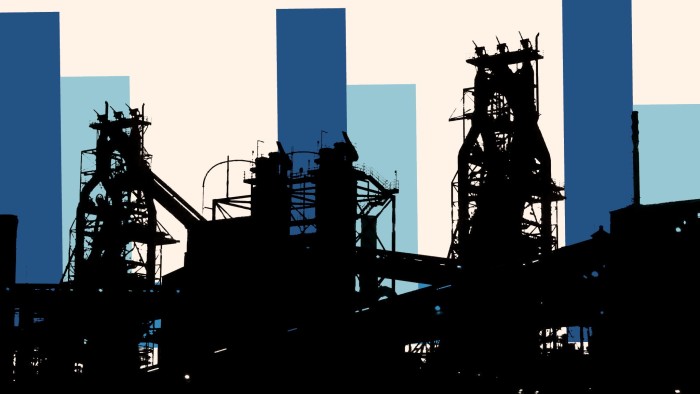Unlock the Editor’s Digest for free
Roula Khalaf, Editor of the FT, selects her favourite stories in this weekly newsletter.
Globalisation hangs on a simple, alluring idea: make things where doing so is cheapest, then ship them to and fro. But it only works if the second half of that scenario remains viable. If there’s a chance your trade partner might use their commercial heft to strong-arm you, it might be better to pay a bit more, and keep what’s really important under your direct control.
Steel is a solid example of where the pendulum has swung back from efficiency to certainty. So the UK’s decision this weekend to wrest control of lossmaking British Steel from its Chinese owner Jingye — and hence ensure it keeps running — has barely raised an eyebrow. The idea that the UK might lose its last remaining blast furnaces, and therefore its ability to make new steel from iron ore, is apparently too terrible to contemplate.
Behind this fear lie others. Loss of employment is one. Newer production technologies — such as melting scrap in electric arc furnaces, which could fit a country that exports a lot of unwanted metal — used to be associated with lower grades of steel, though this isn’t necessarily the case any more. All these strands get tangled up with the UK’s attachment to a metal that holds a central spot in its history as an industrial powerhouse.
The fact is that keeping steel production in the UK requires a forever subsidy. Globally, capacity is perhaps 30 per cent higher than demand. The cost of energy is a big factor in steelmaking; producing the stuff in Europe is only barely competitive, in the UK even less so.

The net result is that China is a big exporter. Both the UK and Europe are net importers. Local mills are barely profitable, if at all, and the UK’s steel supply chain is creaking everywhere. By way of example, Manchester-based steel service centre Malcolm Clarke is set to close this summer.
The whole issue is complicated by US tariffs, and the fact that — in both Europe and the UK — steelmaking will need to eliminate carbon dioxide emissions to meet net zero targets. The pathway for blast furnaces to go green requires using hydrogen, rather than coal, as a feedstock in the process. That means additional investments, and extra energy costs.

There are workarounds. Europe could boost its competitiveness for a while with a carbon border adjustment mechanism, which is basically a tax on the carbon intensity of imported steel. But, in the long term, Europe’s green energy costs are likely to be a lot higher than those of sunnier and windier areas of the world.
Ultimately, making steel at home is a trade-off that seems more appealing when global trust in commerce is scarce. With enough will, British Steel’s furnaces can be kept alight. But whether in the form of direct subsidies, lower energy costs, or mandated procurement quotas, security comes at a cost that taxpayers and consumers will have to bear.
https://www.ft.com/content/ffad3df5-1fcb-4857-a5ad-e7a8a4559659


